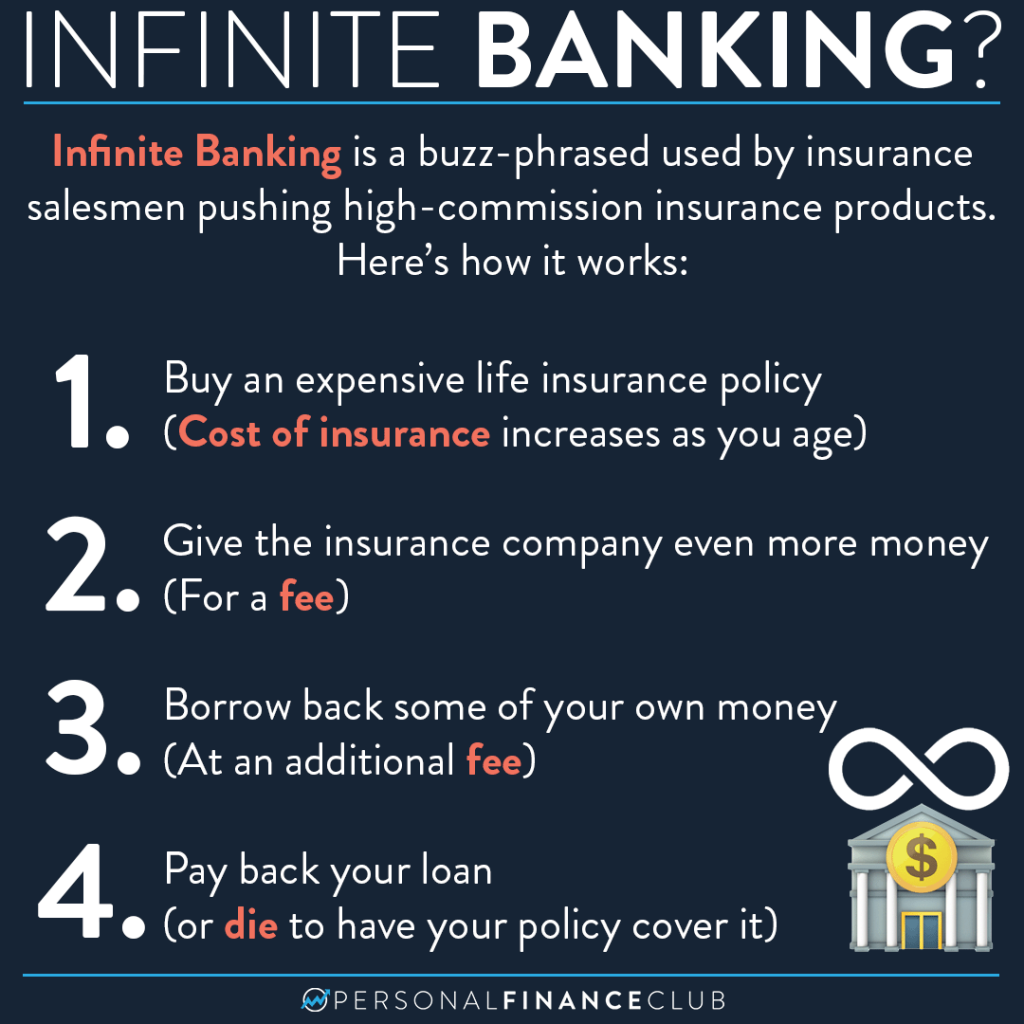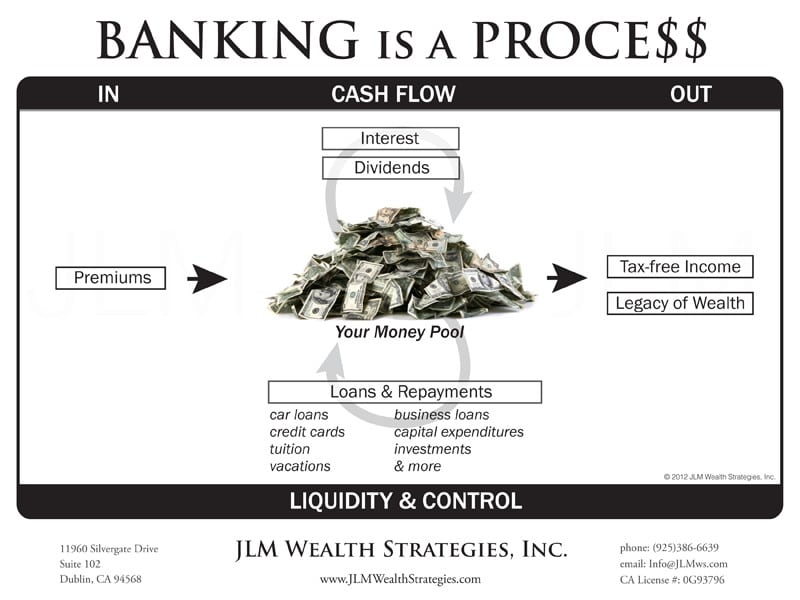All Categories
Featured
Table of Contents
Okay, to be reasonable you're actually "financial with an insurance provider" instead than "banking on yourself", however that principle is not as very easy to offer. Why the term "infinite" banking? The idea is to have your money operating in multiple places at the same time, as opposed to in a single area. It's a bit like the concept of buying a house with cash money, then obtaining versus the home and putting the money to work in one more financial investment.
Some individuals like to talk about the "rate of money", which primarily implies the same thing. That does not suggest there is nothing rewarding to this concept once you get past the advertising.
The entire life insurance industry is afflicted by overly pricey insurance coverage, massive compensations, questionable sales techniques, low prices of return, and improperly educated customers and salesmen. If you want to "Bank on Yourself", you're going to have to wade right into this industry and really acquire entire life insurance. There is no alternative.
The guarantees fundamental in this item are essential to its function. You can obtain against the majority of sorts of money value life insurance coverage, yet you should not "bank" with them. As you purchase an entire life insurance coverage plan to "bank" with, remember that this is a totally different area of your financial plan from the life insurance coverage section.
As you will see below, your "Infinite Financial" plan truly is not going to reliably give this crucial financial function. One more trouble with the truth that IB/BOY/LEAP depends, at its core, on an entire life policy is that it can make buying a policy troublesome for numerous of those interested in doing so.
Life Insurance Infinite Banking
Unsafe pastimes such as SCUBA diving, rock climbing, sky diving, or flying additionally do not mix well with life insurance coverage products. The IB/BOY/LEAP supporters (salesmen?) have a workaround for youbuy the plan on someone else! That may exercise fine, since the factor of the plan is not the survivor benefit, yet bear in mind that getting a plan on small kids is a lot more pricey than it needs to be because they are generally underwritten at a "basic" rate rather than a chosen one.

Most plans are structured to do one of 2 points. The payment on an entire life insurance coverage plan is 50-110% of the initial year's costs. Often plans are structured to optimize the death advantage for the costs paid.
With an IB/BOY/LEAP plan, your goal is not to maximize the survivor benefit per dollar in premium paid. Your goal is to make best use of the money worth per dollar in costs paid. The rate of return on the policy is extremely important. One of the most effective means to maximize that factor is to obtain as much cash money as feasible right into the policy.
The very best method to improve the price of return of a plan is to have a relatively small "base policy", and afterwards placed more cash right into it with "paid-up enhancements". As opposed to asking "How little can I put in to obtain a specific death benefit?" the concern becomes "How a lot can I legally took into the policy?" With even more money in the plan, there is more cash value left after the prices of the survivor benefit are paid.
An additional benefit of a paid-up enhancement over a routine premium is that the commission price is lower (like 3-4% rather than 50-110%) on paid-up additions than the base policy. The much less you pay in compensation, the greater your rate of return. The price of return on your money worth is still going to be negative for a while, like all money value insurance plan.
The majority of insurance business only use "straight recognition" car loans. With a direct recognition loan, if you borrow out $50K, the dividend rate applied to the cash worth each year only applies to the $150K left in the plan.
A Life Infinite
With a non-direct recognition finance, the company still pays the exact same reward, whether you have actually "obtained the cash out" (technically versus) the policy or not. Crazy? That recognizes?
The business do not have a resource of magic totally free cash, so what they give up one area in the policy must be taken from another place. If it is taken from a feature you care less about and put into an attribute you care much more about, that is a good thing for you.
There is another important attribute, generally called "clean fundings". While it is great to still have dividends paid on money you have actually obtained of the policy, you still need to pay passion on that particular car loan. If the reward rate is 4% and the financing is billing 8%, you're not exactly appearing in advance.
With a laundry financing, your lending rates of interest is the same as the reward price on the plan. So while you are paying 5% rate of interest on the lending, that rate of interest is totally balanced out by the 5% dividend on the finance. So in that regard, it acts similar to you took out the money from a checking account.

5%-5% = 0%-0%. Without all 3 of these variables, this policy merely is not going to work extremely well for IB/BOY/LEAP. Virtually all of them stand to make money from you acquiring into this concept.
In truth, there are lots of insurance coverage representatives discussing IB/BOY/LEAP as an attribute of whole life that are not in fact selling plans with the necessary functions to do it! The problem is that those that understand the principle best have an enormous conflict of rate of interest and generally inflate the advantages of the idea (and the underlying plan).
Public Bank Visa Infinite
You need to contrast loaning against your policy to taking out money from your financial savings account. No money in cash worth life insurance. You can put the money in the financial institution, you can invest it, or you can acquire an IB/BOY/LEAP policy.
You pay tax obligations on the rate of interest each year. You can save some even more money and placed it back in the banking account to start to earn rate of interest again.
It expands throughout the years with capital gains, rewards, leas, and so on. Several of that income is taxed as you go along. When it comes time to get the watercraft, you offer the investment and pay tax obligations on your lengthy term capital gains. After that you can conserve some even more money and purchase some more financial investments.
The money worth not used to spend for insurance policy and payments grows over the years at the returns price without tax drag. It starts out with unfavorable returns, but with any luck by year 5 approximately has actually recovered cost and is expanding at the returns rate. When you most likely to get the watercraft, you borrow versus the policy tax-free.
Rbc Infinite Visa Private Banking
As you pay it back, the cash you repaid begins expanding again at the dividend rate. Those all job quite similarly and you can contrast the after-tax rates of return. The fourth choice, nonetheless, works really differently. You do not save any type of money nor acquire any kind of type of investment for many years.
They run your credit report and offer you a loan. You pay interest on the obtained money to the bank up until the finance is paid off.
Table of Contents
Latest Posts
A Life Infinite
Infinite Banking Link
Infinite Banking System
More
Latest Posts
A Life Infinite
Infinite Banking Link
Infinite Banking System